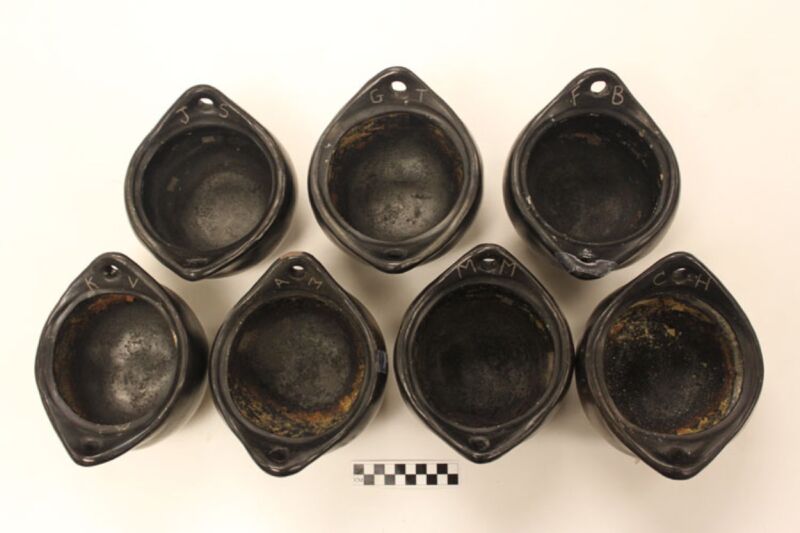Studying clay-pot residues could help scientists recreate ancient recipes

Enlarge / Seven La Chamba unglazed ceramic pots were used in a yearlong cooking experiment analyzing the chemical residues of the meals prepared. (credit: Melanie Miller)
Archaeologists are fascinated by many different aspects of cultures in the distant past, but determining what ancient people cooked and ate can be particularly challenging. A team of researchers spent an entire year analyzing the chemical residues of some 50 meals cooked in ceramic pots and found such cookware retained not just the remnants of the last meal cooked, but also clues as to earlier meals, spanning a pot's lifetime of usage. This could give archaeologists a new tool in determining ancient diets. The researchers described their results in a recent paper published in the journal Scientific Reports.
According to co-author Christine Hastorf, an archaeologist at the University of California, Berkeley (UCB), the project has been several years in the making. Hastorf has long been interested in the relationships between people and plants throughout history, particularly as they pertain to what people ate in the past. Back in 1985, she co-authored a paper examining the isotopes of charred plant remains collected from the inside of pots. She has also long taught a food archaeology class at UCB. A few years ago, she expanded the course to two full semesters (nine months), covering both the ethnographic aspects as well as the archaeological methods one might use to glean insight into the dietary habits of the past.
The class was especially intrigued by recent molecular analysis of pottery, yet frustrated by the brevity of the studies done to date on the topic. Hastorf proposed conducting a longer study, and her students responded enthusiastically. So they devised a methodology, assigned research topics to each student, and located places to purchase grain (maize and wheat from the same region of the Midwest), as well as receiving venison in the form of donated deer roadkill. She even bought her own mill so they could grind the grains themselves, setting it up in her home garage.
Read 8 remaining paragraphs | Comments